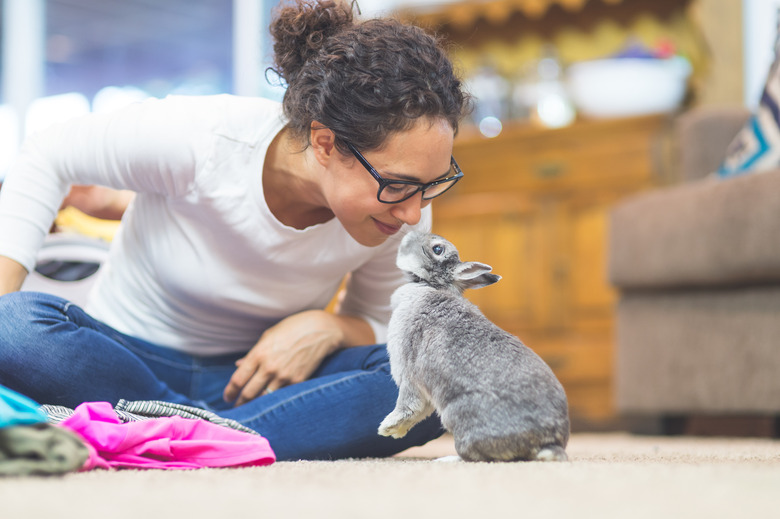Difference Between Male & Female Rabbits
Rabbits are versatile pets that do pretty well as solo animals but are best kept in the company of others of their species. However, when unneutered bucks and does live together, it won't be long before they have plenty of friends. Buns are prolific breeders beginning as young as three months old, according to Rabbitspot, so it's important to know whether that new bundle of fuzz you'll be caring for is a male or female rabbit before bringing one into your home.
Sexing baby bunnies
Sexing baby bunnies
Rabbits are born with a penis or vagina; however, their genitals are tucked away in a vent opening and not yet fully mature, making it very difficult to discern whether they are male or female. Wait until a kit is six-to-eight weeks old to determine their sex. Handling younger rabbits can cause their mother to reject them due to your human smell and putting off the experience until after weaning eliminates the worry of maternal neglect.
Hold your bunny firmly with one hand over its back, turning it gently to rest on its rump. Don't allow it to kick or struggle, as rabbits can fracture their spine or sustain other injuries in their haste to get away. Use your forefinger and second finger to pull the tail outward gently. Use your thumb to press down on the belly just above the vent area. Observe two openings. The one nearest the rear is the anus and the one closest to the abdomen is the genitalia.
A vertical slit above and close to the anus means your rabbit is a female. A round dot in this area is the opening on the tip of the penis. Press firmly enough that the genitals start to extrude enough for you to see which is which. Be especially careful at this age as the genitalia is not fully mature and injuries happen easily. Genitalia becomes more distinct the older the babies get.
Determining adult gender
Determining adult gender
When your rabbit is fully mature, it will be easier to discern gender. Female rabbits have four-to-five pairs of nipples running along their abdomen with four being most common according to Vetstream. Nipples in the male are so underdeveloped that you probably won't be able to find them at all. Females of many species develop a dewlap, a fleshy pouch under their chin. Female bunnies are also bigger and heavier than males of the same species when fully mature.
Looking at adult genitalia
Looking at adult genitalia
Turn the rabbit gently on its rump and hold it securely. Mature males have purplish testicles to each side of their tail. Unlike some animal species, each testicle has a separate scrotal sac. Although the testicles are very prominent, a scared or cold rabbit can pull the testicles inside the body. The scrotum will remain outside; feel through the hair for loose fleshy skin with little hair. Some females also have bald spots where testicles should be; however, the skin is taut and smooth. Male rabbit anatomy means the rabbit penis is often concealed by a fluffy mound of hair. Gently smoothing the hair to each side will enable you to see the penile tip.
An adult female has a pink vulva shielding her rabbit vagina, making it easy to differentiate from the purple scrotal sacs of the male. The vulva has a vertical slit that makes it easy to differentiate from the round opening at the end of a male rabbit penis.
Observe bunny sexual behavior
Observe bunny sexual behavior
Even solo rabbits will exhibit gender-specific behavior once they reach sexual maturity. For example, unspayed females tend to dig to create breeding dens and will protect their holes by actions such as biting, scratching, or charging. Males can be aggressive, too, and might grasp, bite, or hump a human arm in sexual frustration. They also spray urine in their cage and around the house to mark their territory and announce their presence to any females in the area.
Neutering or spaying your rabbit will stop unwanted sex-oriented behavior; however, it may take a few months for the hormones to settle down according to Rabbitspot. Don't put your neutered male in with an unaltered female bunny for about six weeks, though, as the males remain fertile for several weeks after the operation.
Males defecate more
Males defecate more
Male rabbits of any species tend to be smaller than females and have blockier heads. They also process feed differently. A study by Bayero University in Nigeria on rabbit nutrient conversion found that although male and female rabbits ate roughly the same amounts, the females ended up weighing more, while males produced more excrement.
